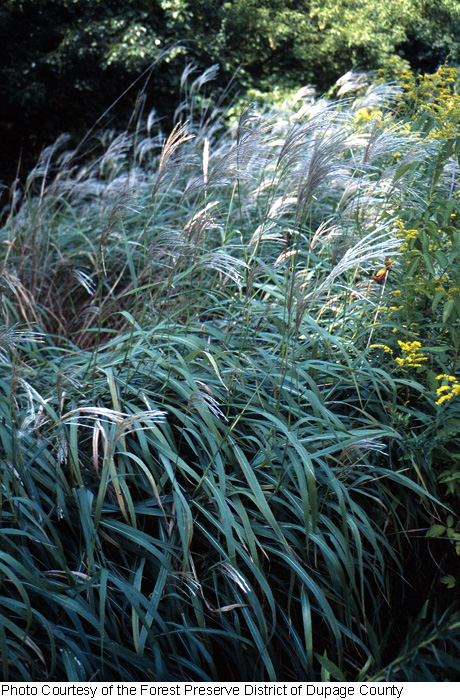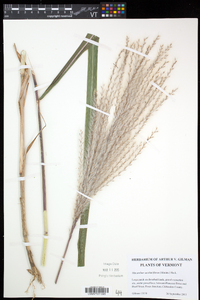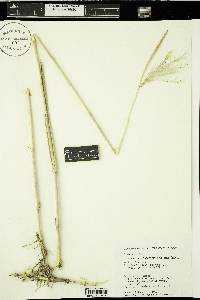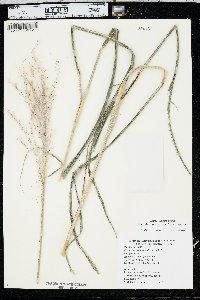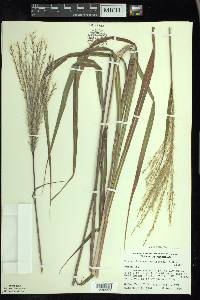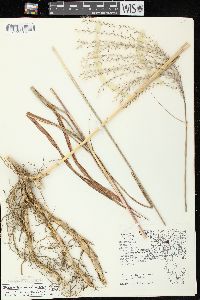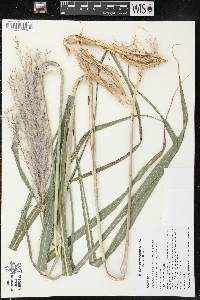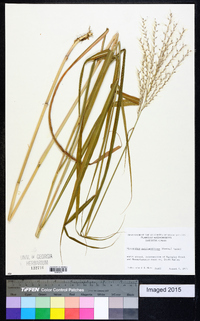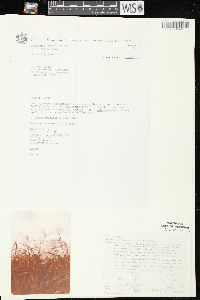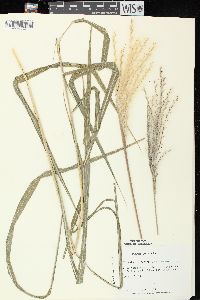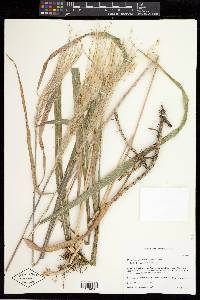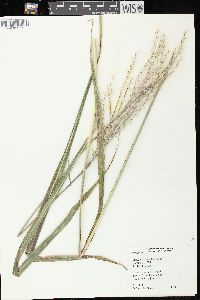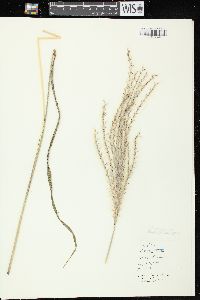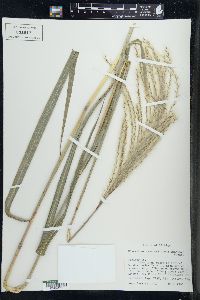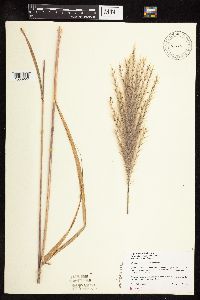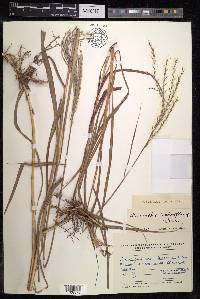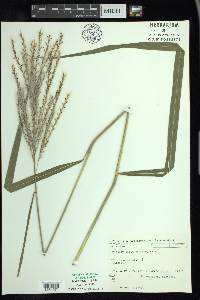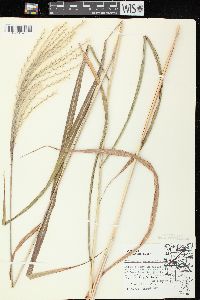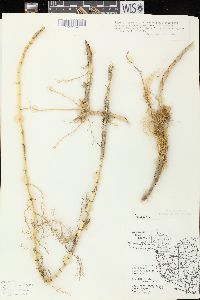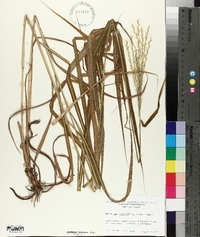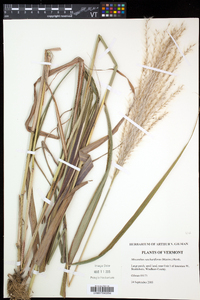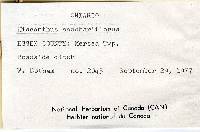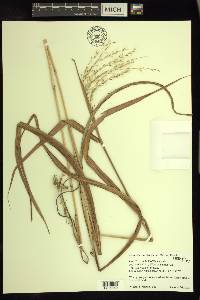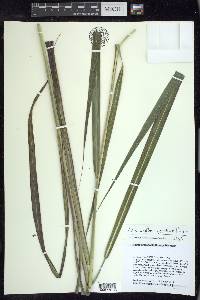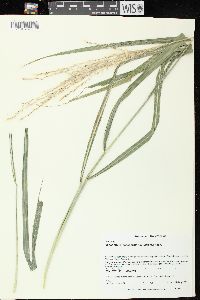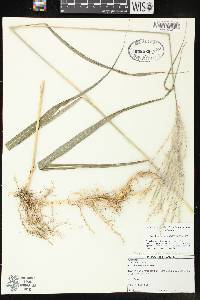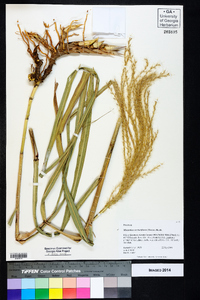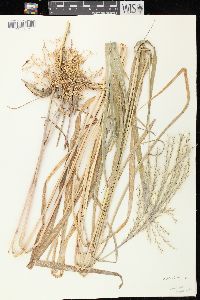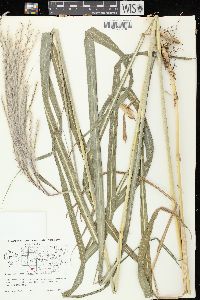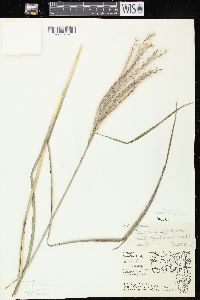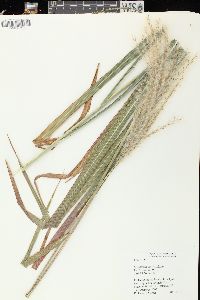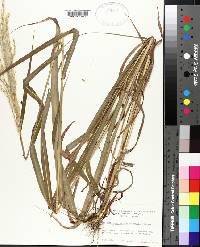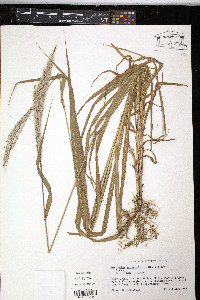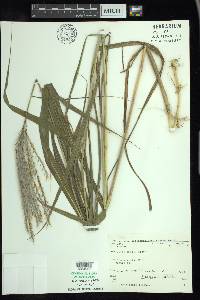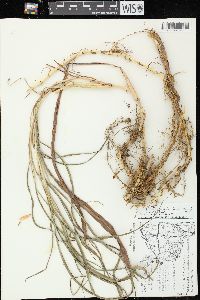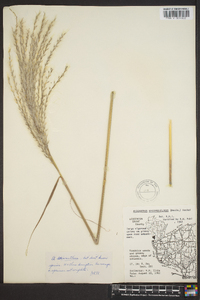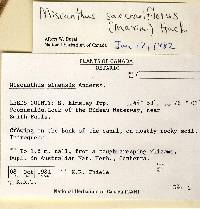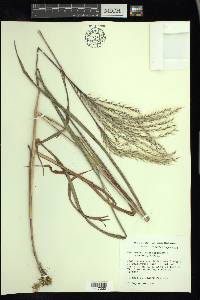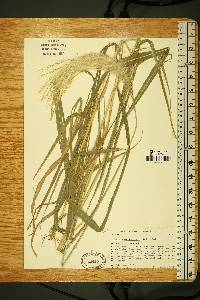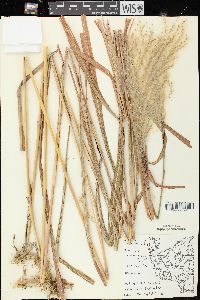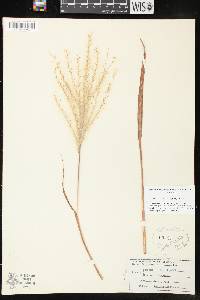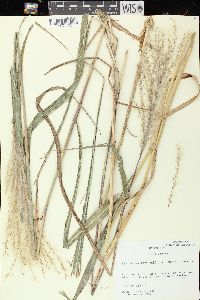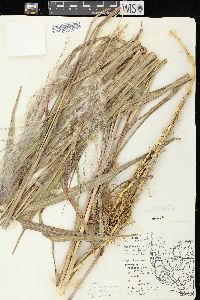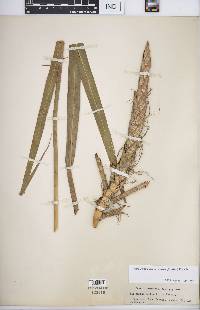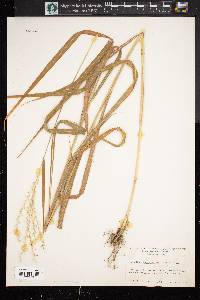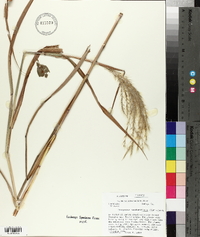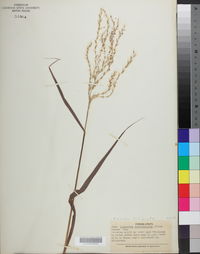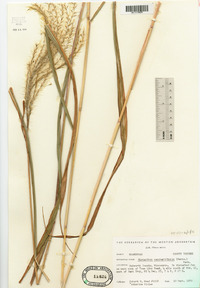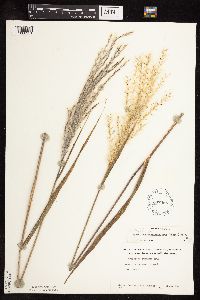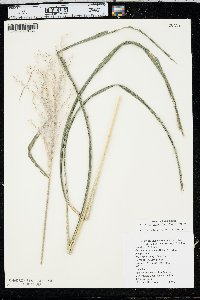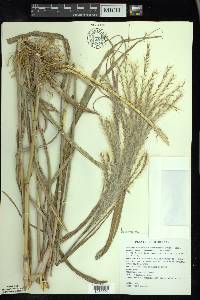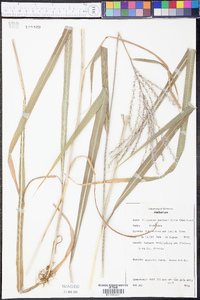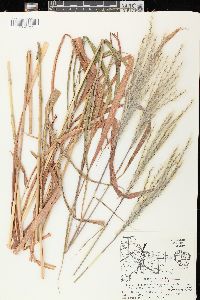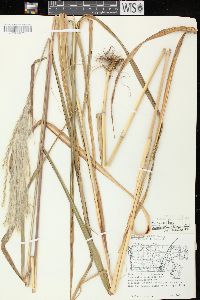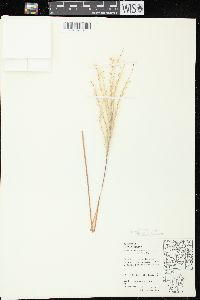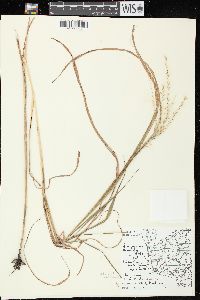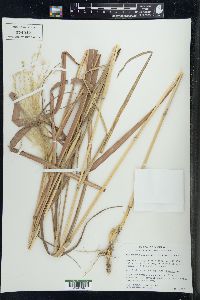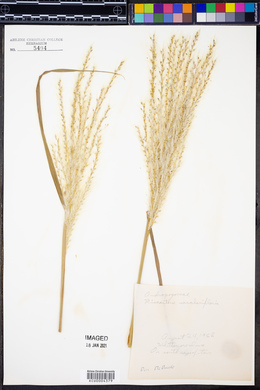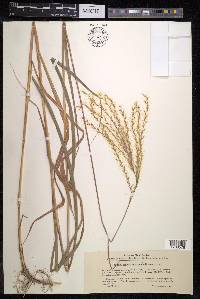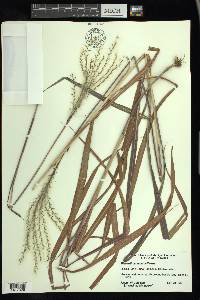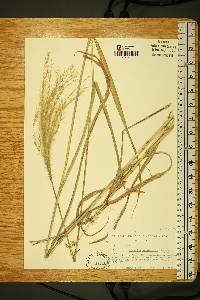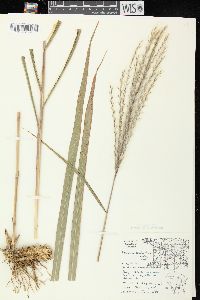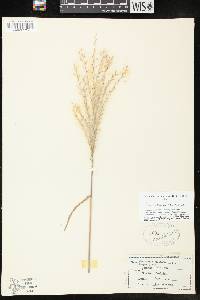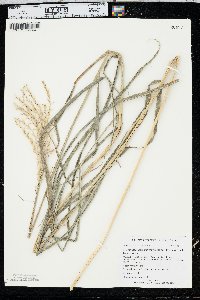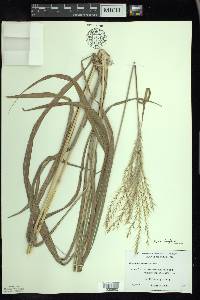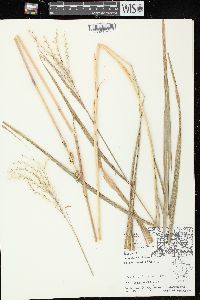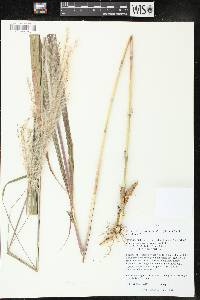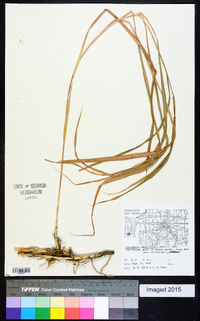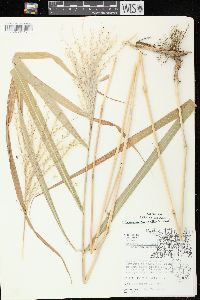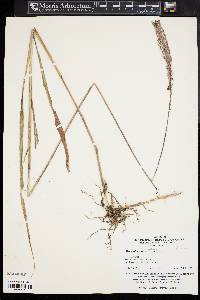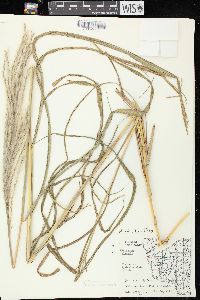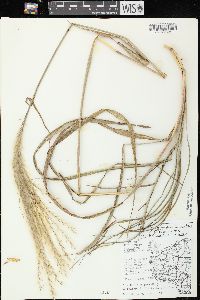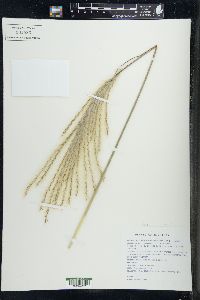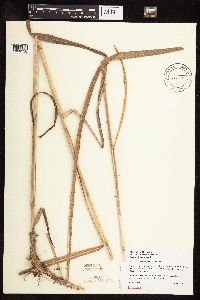
|
|
|
|
Family: Poaceae
Amur Silver Grass, more...Amur Silvergrass, Miscanthus
[Imperata saccharifera Andersson ex Benth., moreImperata sacchariflora Maxim., Miscanthus saccariflorus (Maxim.) Hack., Miscanthus saccharifer Benth.] |
Plants rhizomatous, rhizomes 3-6 mm wide. Culms 60-250 cm tall, 5-8 mm thick below; nodes pilose. Leaves evenly distributed; ligules 0.5-1 mm; blades 20-80 cm long, 0.5-3 cm wide, adaxial surfaces densely pilose basally, midribs prominent, whitish. Panicles 15-40 cm long, 8-16 cm wide, white to yellowish-brown, usually with more than 15 branches; rachises 4-10 cm; nodes pilose; branches 10-35 cm long, about 10 mm wide, sometimes branching at the base. Shorter pedicels 1.5-3 mm; longer pedicels 3-7 mm, strongly curved at maturity. Spikelets 4-6 mm; callus hairs 2-4 times as long as the spikelets, copious, white. Lower glumes 2-keeled above, margins densely pilose distally, hairs to 15 mm; upper glumes 4-5 mm, 3-veined, margins ciliate distally; awns of upper lemmas absent or short, not exceeding the glumes. 2n = 38, 57, 64, 76, 95. Miscanthus sacchariflorus is native to the margins of rivers or marshes in temperate to north-temperate regions of eastern Asia, and appears to require cold and humidity for optimum growth. It has escaped from cultivation in various parts of the Flora region. It combines a large, plumose panicle with recurving leaves that turn orange in the fall. Perennial tufted herb, bearing rhizomes 3 - 6 mm wide 0.6 - 2.9 m tall Leaves: evenly distributed along culm, with open sheaths and 0.5 - 1 mm long, membranous, flat-topped ligules lined with hairs along the margins. The blades 20 cm - 0.8 m long, 0.5 - 3 cm wide, flat, with prominent whitish midveins and an upper surface that is densely soft-haired near the base. Inflorescence: terminal, branched (panicle), white to yellowish brown, 15 - 40 cm long, 8 - 16 cm wide, with the main axis (rachis) 4 - 10 cm long with soft-haired nodes, and the branches 10 - 35 cm long and 10 mm wide. Fruit: a caryopsis. Culm: erect, 0.6 - 2.5 m long, 5 - 8 mm across near base, nodes soft-haired. Spikelets: either stalkless or stalked, 4 - 6 mm long. Glumes: equal. The lower glume has two longitudinal ridges and the tip is densely covered in soft white hairs (to 15 mm long) along the margins. The upper glume is 4 - 5 mm long, three-veined, and the margins are lined with hairs near the tip. Florets: either sterile (lower florets) or bisexual (upper florets). The lemma is either absent or has short awns not extending beyond the glumes. Similar species: Miscanthus sinensis is easy to distinguish from Miscanthus sacchariflorus because it has long-awned lemmas. Flowering: early September to late October Habitat and ecology: Introduced from Asia, this species occasionally escapes from gardens, often into waste ground. Occurence in the Chicago region: non-native Etymology: Miscanthus comes from the Greek words miskos, meaning stem, and anthos, meaning flower. Sacchariflorus means "with flowers resembling Saccharum (sugar cane)." Author: The Morton Arboretum Colonial, 1.5-2 m from long stout rhizomes; lvs 1-2 cm wide; infl pure silky-white, the basal hairs ca twice as long as the glumes; lemmas awnless; 2n=38-95. Native of e. Asia, cult. for ornament and occasionally escaped. Gleason, Henry A. & Cronquist, Arthur J. 1991. Manual of vascular plants of northeastern United States and adjacent Canada. lxxv + 910 pp. ©The New York Botanical Garden. All rights reserved. Used by permission. |

